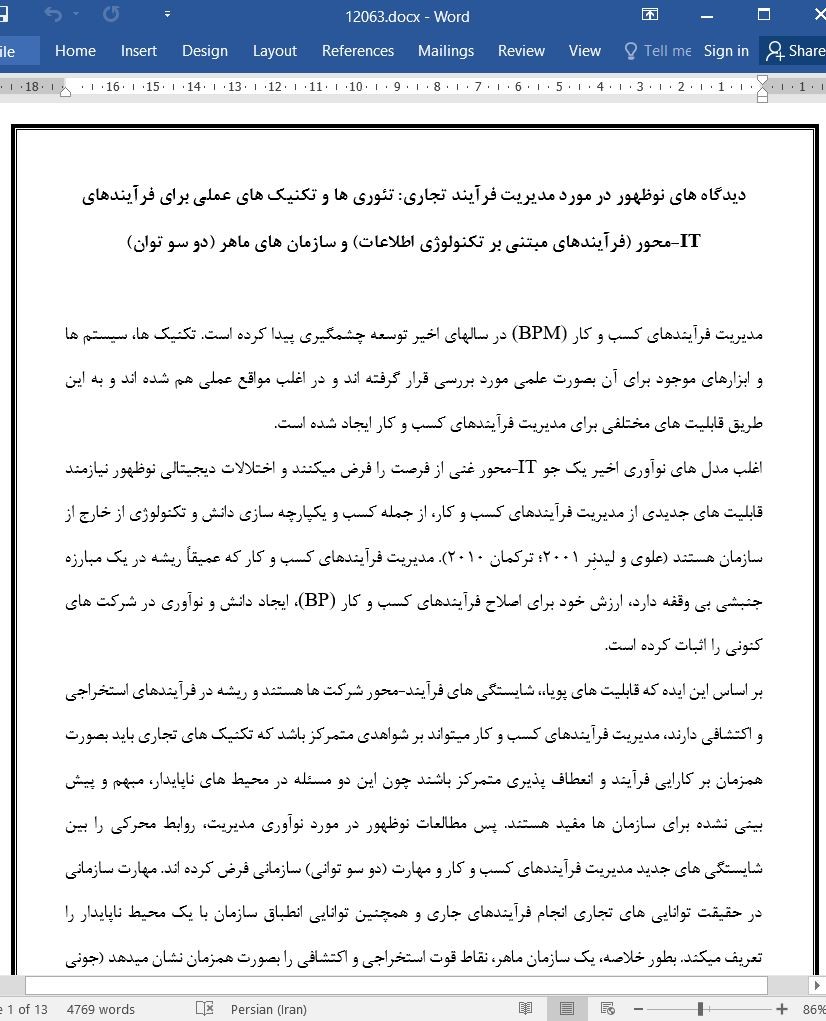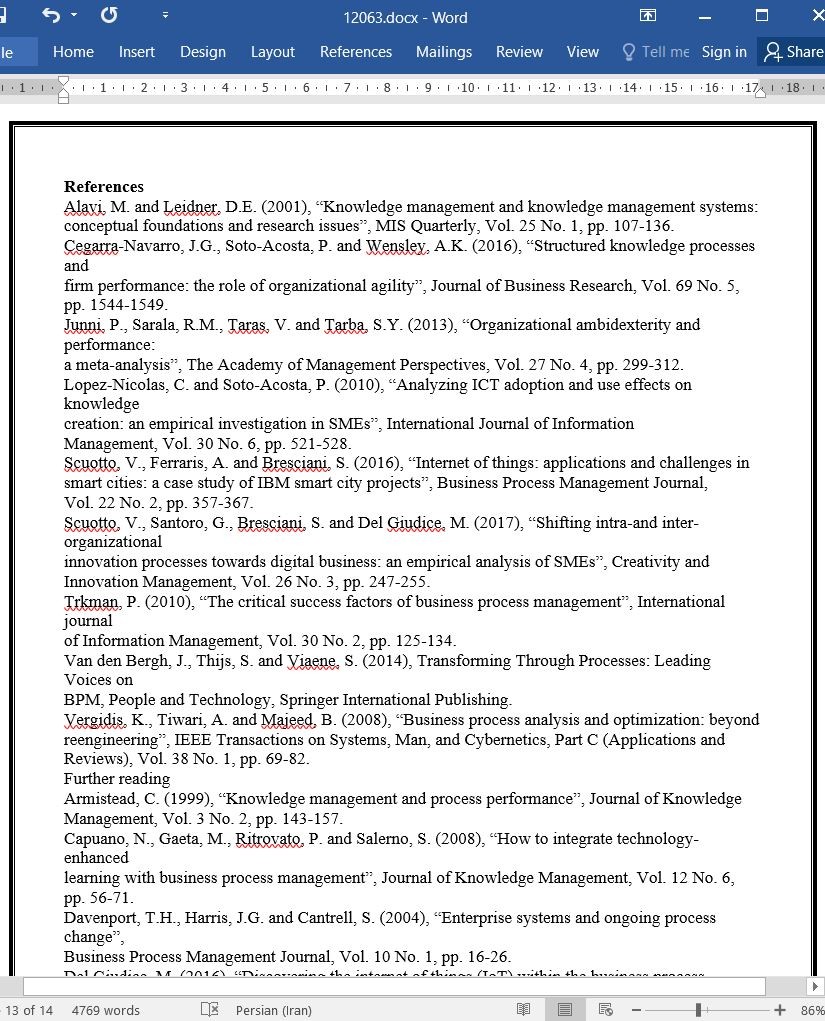
دیدگاه های نوظهور در مورد مدیریت فرآیند تجاری: تئوری ها و تکنیک های عملی برای فرآیندهای IT-محور
مدیریت فرآیندهای کسب و کار (BPM) در سالهای اخیر توسعه چشمگیری پیدا کرده است. تکنیک ها، سیستم ها و ابزارهای موجود برای آن بصورت علمی مورد بررسی قرار گرفته اند و در اغلب مواقع عملی هم شده اند و به این طریق قابلیت های مختلفی برای مدیریت فرآیندهای کسب و کار ایجاد شده است.
اغلب مدل های نوآوری اخیر یک جو IT-محور غنی از فرصت را فرض میکنند و اختلالات دیجیتالی نوظهور نیازمند قابلیت های جدیدی از مدیریت فرآیندهای کسب و کار، از جمله کسب و یکپارچه سازی دانش و تکنولوژی از خارج از سازمان هستند (علوی و لیدنِر 2001؛ ترکمان 2010). مدیریت فرآیندهای کسب و کار که عمیقاً ریشه در یک مبارزه جنبشی بی وقفه دارد، ارزش خود برای اصلاح فرآیندهای کسب و کار (BP)، ایجاد دانش و نوآوری در شرکت های کنونی را اثبات کرده است.
بر اساس این ایده که قابلیت های پویا،، شایستگی های فرآیند-محور شرکت ها هستند و ریشه در فرآیندهای استخراجی و اکتشافی دارند، مدیریت فرآیندهای کسب و کار میتواند بر شواهدی متمرکز باشد که تکنیک های تجاری باید بصورت همزمان بر کارایی فرآیند و انعطاف پذیری متمرکز باشند چون این دو مسئله در محیط های ناپایدار، مبهم و پیش بینی نشده برای سازمان ها مفید هستند. پس مطالعات نوظهور در مورد نوآوری مدیریت، روابط محرکی را بین شایستگی های جدید مدیریت فرآیندهای کسب و کار و مهارت (دو سو توانی) سازمانی فرض کرده اند. مهارت سازمانی در حقیقت توانایی های تجاری انجام فرآیندهای جاری و همچنین توانایی انطباق سازمان با یک محیط ناپایدار را تعریف میکند. بطور خلاصه، یک سازمان ماهر، نقاط قوت استخراجی و اکتشافی را بصورت همزمان نشان میدهد (جونی و همکارانش 2013).
The BPM has considerably developed over the recent years. The practices, systems and tools available have been scientifically investigated and, in most occasions, positioned in practice, thus making several of these BPM capabilities similar to commodities.
Most recent innovation models increasingly postulate an opportunity-rich IT-based atmosphere, and hastily emerging digital disruptions require novel BPM capabilities including the acquisition and incorporation of knowledge and technology from outside the organization (Alavi and Leidner, 2001; Trkman, 2010). Deeply rooted in an unceasing improvement crusade, BPM has proven its value for refining business processes (BPs), knowledge creation and innovation within present enterprises.
Drawing upon the idea that dynamic capabilities are process-driven competence of the firms and are rooted in both exploitative and explorative processes, BPM can be focusing on the evidence that business practice should simultaneously emphasize process efficiency as well as flexibility which is beneficial for organizations in unstable, ambiguous and casual environments. Then, actually, emerging studies on management innovation have hypothesized intriguing relationships between novel BPM competencies and organizational ambidexterity. Organizational ambidexterity, in fact, defines the co-existing business abilities of running the current processes as well as being able to acclimatize constantly the organization to a mutable environment. In a nutshell, an ambidextrous organization shows, at the same time, both exploitative and explorative strengths ( Junni et al., 2013)
- اصل مقاله انگلیسی با فرمت ورد (word) با قابلیت ویرایش
- ترجمه فارسی مقاله با فرمت ورد (word) با قابلیت ویرایش، بدون آرم سایت ای ترجمه
- ترجمه فارسی مقاله با فرمت pdf، بدون آرم سایت ای ترجمه


